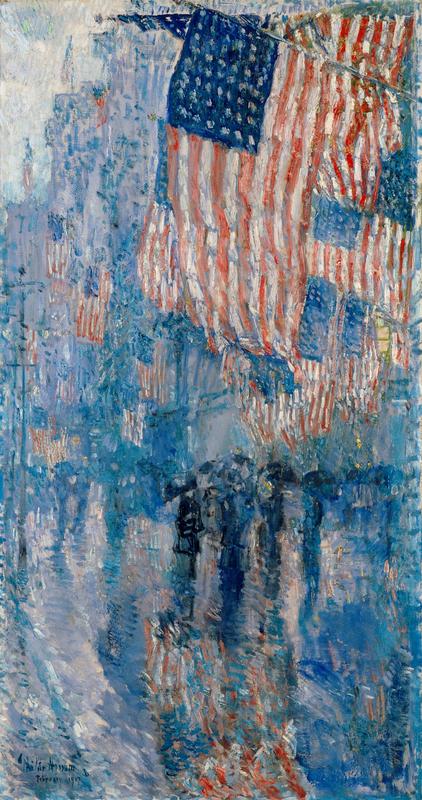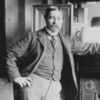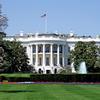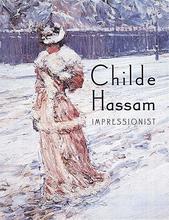More about Avenue in the Rain
- All
- Info
- Shop

Contributor
If Fredrick Childe Hassam saw America today, we wonder if he would be wearing a MAGA hat.
The America that he knew when he painted The Avenue in the Rain was preparing to join the first World War. In 1917, President Woodrow Wilson finally joined the allied powers in what he hoped would be the "war to end all wars," a war that would pave the way for democracy to flourish worldwide. Come to think of it America has always been at war. The war on drugs, the war on terrorism. The first world war, however, was a big deal. It was the first real war of Childe Hassam's adult life.
Hassam's dark complexion and heavily lidded eyes led many to believe that he was, well, exotic. He got away with it too, eventually dropping his first name to become Childe Hassam. He did enjoy appropriating middle eastern cultures. But he was also very proud of being American. He would have loved Coachella.
Childe Hassam, as we now know him, did pretty well for himself. He managed to make a living off his paintings without having to do much else. He was a privileged man. Known to be quite the charmer, Hassam made it a point to travel in elite circles. When I say elite, I also mean racist. Childe's friend Frederick Remington, a Western American painter, once said "I’ve got some Winchesters, and when the massacring begins which you speak of, I can get my share of ’em and what’s more I will. Jews—injuns—Chinamen—Italians—Huns, the rubbish of the earth I hate." I'm going to get stress lines on my face if I learn more about Remington. You get to know a lot about a man from the company he keeps. While Childe had a lot of friends, some of them nice, I wouldn't ignore his association with this vile man.
The Avenue in the Rain was included in the White House's permanent collection while John F. Kennedy was in office. It hung in the President's dining room until Barack Obama decided to have it moved to the Oval Office. President Trump, after his grand redecoration, also decided to keep the artwork in the Oval Office. The two presidents may disagree on a lot of things, this painting (surprisingly!) isn't one of them.
Childe Hassam was a patriotic American. After all, his family had been in the United States since the 1700s. He was the most American American in America. He was inspired by the preparedness parades of 1916 to create the Flag series. A few of them are reminiscent of Claude Monet's work with flags. Hassam hated being told his work seemed to be influenced by that of the French Impressionist genius. He was a pompous man. It was like telling Joe Carnahan that his movies look like that of Quentin Tarantino's. Don't even try-- Joe gets really angry about it. Hassam and Monet did actually know each other and he definitely was influenced by Monet's work. Oh, stop rolling in your grave Hassam.
Hassam was a talented artist who immortalized his love for his country in this painting. Hassam saw the glory of war, not so much the destruction involved. A rainy evening on 5th Avenue, a country prepared to go to war, while Hassam played another round of golf.
Sources
- Wikipedia contributors. "American entry into World War I". Wikipedia, The Free Encyclopedia, https://en.wikipedia.org/w/index.php?title=American_entry_into_World_Wa… (accessed May 31, 2019).
- Cappetta, John. “Childe Hassam”. Sartle.com. https://www.sartle.com/artist/childe-hassam (accessed May 31, 2019).
- Schjeldahl, Peter. “All-American”. The New Yorker. https://www.newyorker.com/magazine/2004/07/12/all-american-4 (accessed May 31, 2019).
- The White House Museum. “White House Furnishings”. Furnishings - White House. http://www.whitehousemuseum.org/furnishings/ (accessed May 31, 2019).
- Horsley, Carter B. “Art/Museum: Childe Hassam: American Impressionist at the Metropolitan Museum of Art”. thecityreview.com. https://www.thecityreview.com/hassam.html (accessed May 31, 2019).
Featured Content
Here is what Wikipedia says about The Avenue in the Rain


The Avenue in the Rain is a 1917 oil painting by the American Impressionist painter Childe Hassam. It depicts Fifth Avenue in New York City in the rain, decorated with U.S. flags. The painting is one of six works by Hassam in the permanent art collection of the White House in Washington, D.C.
Check out the full Wikipedia article about The Avenue in the Rain














I really like the color usage in this painting. It is amazing how they blend together to give that rainy day look. This painting is also maddening to me when I attempt to study it. When I try looking too closely at one part of the painting, it all blends together in my head. The textures are probably my favorite part of the painting, and I am very curious as to how the painter was able to obtain such a shiny, reflective look for the puddles in the street.